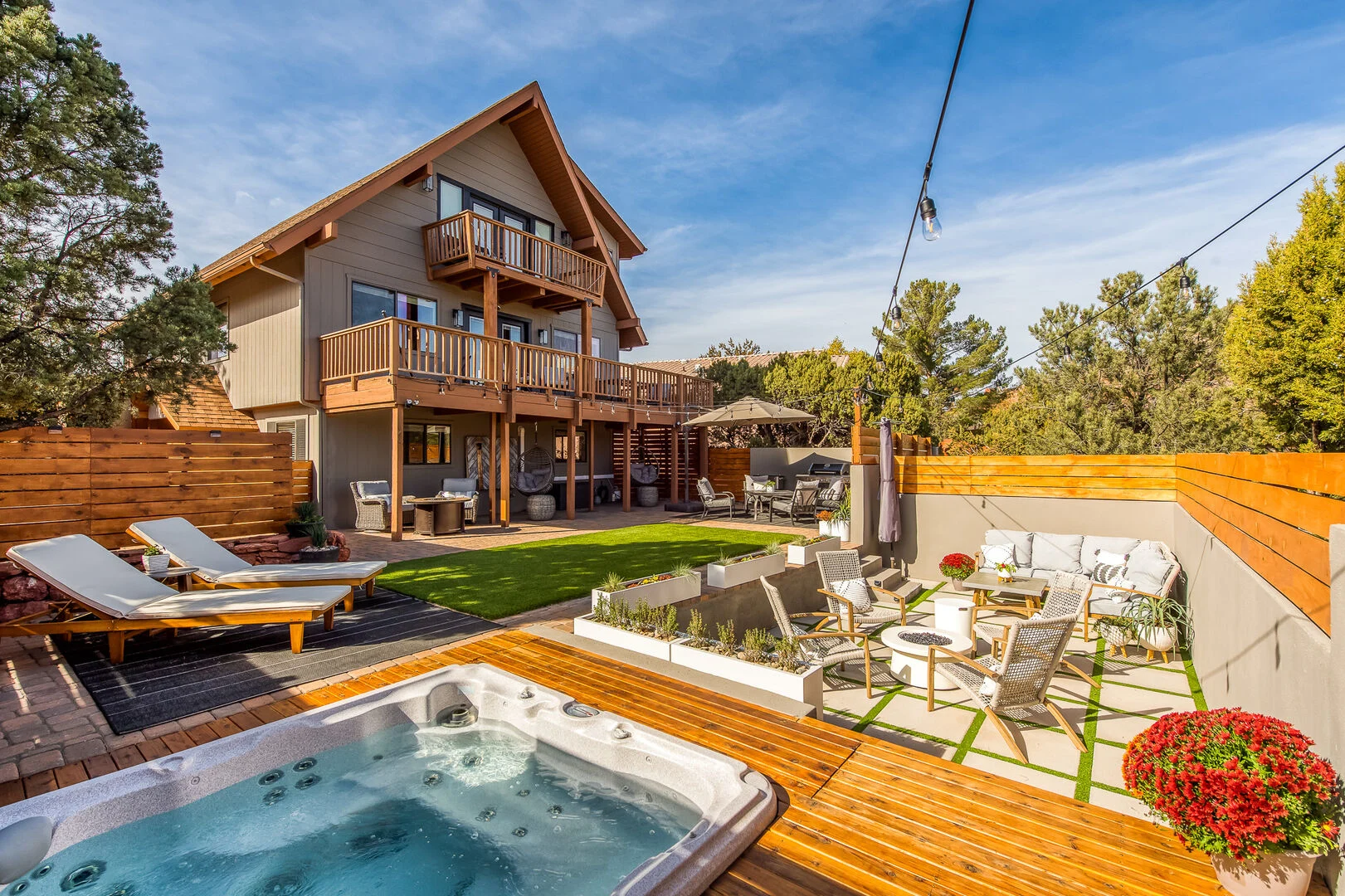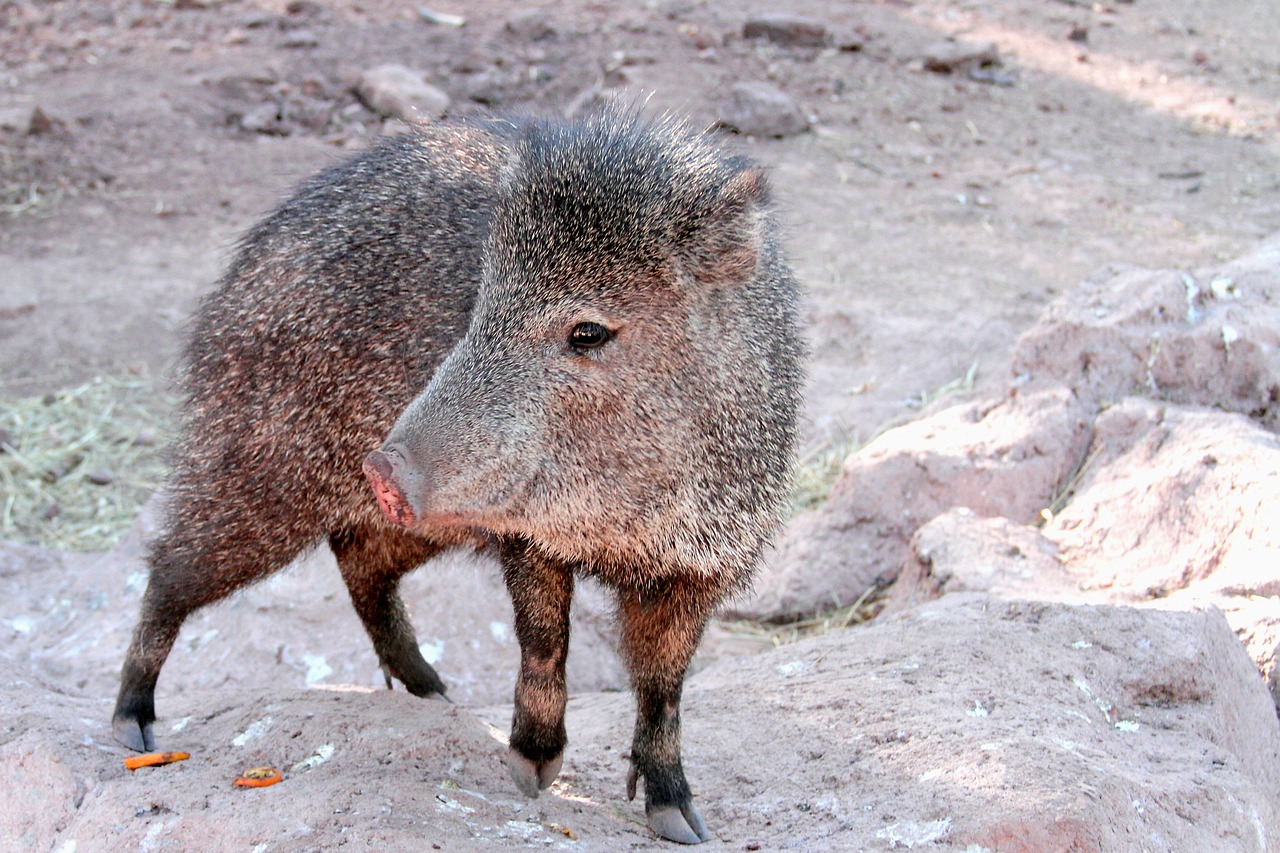With a wealth of trails and tours available for travel, Sedona is located in an ideal, centralized location for seeing the kinds of wildlife Arizona has to offer. Much of the surrounding land is unspoiled, as Sedona is a small town and so are the vast majority of the towns surrounding it. Trails can vary in their intensity, of course, so before embarking on any Sedona wildlife viewing excursions, make sure to do some extra research to make sure everybody in your group is comfortable making the trek.
Seven Sacred Pools
A primary water source for a decent portion of the wildlife in Sedona Arizona, Seven Sacred Pools has a beginner friendly, relatively short hiking trail with the reward of unique scenery centered around isolated water sources. The trail opens at 8:00am and remains open until 6:00pm, but parking can be limited, so if you aren’t certain you’ll find a spot, arranging transportation can be a helpful choice.
If you stick to the trail, you’ll eventually make it to the Devil’s Sinkhole, a daunting but beautiful sight where much of the debris is still visible down in the hole. Snow and rainwater will often pool down there, and on rare occasions wildlife can be spotted stopping by for a drink.
Wildlife watchers will find the real reward in taking some of the paths less traveled, specifically the Brins Mesa Trail, which is a 500-foot climb to the top of the mesa with a majestic view. Since much of the foot and jeep traffic avoids or simply cannot take this path, you’re more likely to see animals that haven’t been scared off by the people and noise.
Coconino National Forest
Coconino National Forest is a massive nature reserve that is well known for its red rocks, but in this huge chunk of land lies countless possibilities to observe nature. Based on how far you’re willing to travel, there are a ton of different trails and campsites available to you. It’s worth inquiring on the official Coconino National Forest website to find out the best spot for you, as there are hundreds of species of birds, mammals, reptiles, and fish spread throughout the reserve.
Organize a camping trip if you’re looking to really immerse yourself in the forest and experience what it has to offer. Countless visits can be made to different areas within the forest, as it encapsulates 1.8 million acres, meaning that each experience can be truly unique. If you’re looking to stay close to Sedona, however, there’s much to do and see around Mormon Lake, which is just over an hour drive from the heart of the town.
Sedona Wetlands Preserve
Occupying approximately 27 acres, the Sedona Wetlands Preserve is located just south of the Sedona Wastewater Treatment Facility. Water in this area is treated and released out into the wetlands under the highest treatment standards, the highest possible rating under Arizona regulations. Because of this rigorous treatment standard, the wetlands have a lot of wildlife to observe, especially with regards to birds.
Wildlife Viewing Trips are offered completely free of charge through the Northern Arizona Audubon Society, with an event calendar posted online for your convenience. Rules are strict, but also based on common sense, so as long as you aren’t disruptive to the wildlife or the environment then the wetlands make for an incredible Sedona wildlife viewing experience.
Slide Rock State Park
Nestled in Oak Creek Canyon, Slide Rock State Park is a hotspot for wildlife viewing, especially with regards to white tailed deer and black bears. Park hours vary based on the season, so be sure to check online before venturing out, as admission fees also vary based on the day.
Many of the trails in Slide Rock are relatively short, though that doesn’t necessarily mean all of the trails are at a beginner level. If you’re looking for an easy path, then the Pendley Homestead Trail is a great choice. The Slide Rock Route offers a more challenging experience and is frequented by swimmers and sunbathers due to its natural waterslide. Trail cameras are available throughout the park as well, so if you’re having difficulty spotting any wildlife, they can often be seen on these strategically placed cameras.
Red Rock State Park
Red Rock State Park is a must-see location for anybody planning on visiting the Sedona area to do some hiking and/or wildlife observation. It’s open Monday through Thursday all year, but operates on restricted days Friday through Sunday, open from Labor Day through May 23rd. Hours of entry are 8:00am – 5:00pm, with last admission at 4:30pm.
Hiking, biking, and horse trails are all available for travel, with biking and horse riding being restricted to specific pathways for safety. Trails consist of a 5-mile network of interconnected loops, allowing for multiple different routes throughout the park with easy access to double back if needed. Certain loops will take you to sections of the park where you can expect to find all different kinds of wildlife in Sedona Arizona, such as javelinas, coyotes, deer, and many species of birds.
Guided experiences are offered if you’d like to travel with someone who knows exactly where to look and can point you in the direction of native flora and fauna. Guided nature walks happen daily at 9:00am, and guided bird walks are available Wednesdays and Saturdays at 7:00am. Contact us to learn more today!









